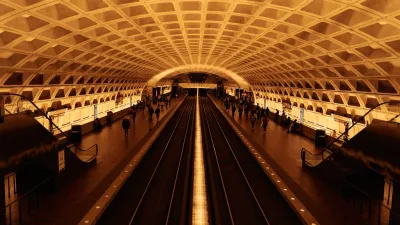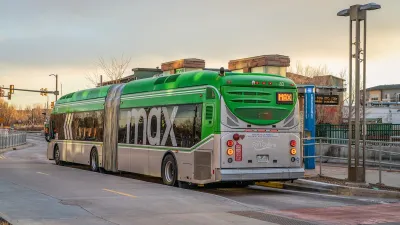How outdated and inefficient city processes can hinder the progress of transportation projects and prevent the development of a comprehensive transportation strategy.

A new National Association of City Transportation Officials (NACTO) report titled Structured for Success assesses the structural and bureaucratic challenges that impede the effective deployment of transportation projects. Jared Brey outlines the report’s findings in Governing.
In the new report, the group defines several typologies of organizational structures, from ‘transportation-focused’ to ‘transportation-diffuse.’ Those typologies help illuminate various challenges in cities that consolidate all transportation-related activities under one department versus those that have people working on transportation issues spread throughout multiple departments.
Brey spoke with Jenny O’Connell, a senior program manager at NACTO, who says the structure of organizations and bureaucratic workflows matters because “A lot of agencies are trying really hard to be responsive to their residents, but the systems that they have in place — challenging procurement processes, difficult contracting processes, administrative red tape — can make it really hard.”
When asked “How do you diagnose a structural problem or a process problem?,” O’Connell mentioned “challenges that come up in similar ways across agencies,” competition among agencies for funding, staffing, and resources, and redundancy across teams as red flags. O’Connell recommends a focus on having a “transportation champion at the head of an agency that deals with all of the transportation functions of a city” that can help coordinate efforts and keep transportation priorities front and center. “Generally what we see is that the agencies that are transportation-focused or transportation-inclusive tend to be able to solve some of those big structural challenges.”
FULL STORY: How Cities Can Solve Transportation Problems and Deliver Better Service

Alabama: Trump Terminates Settlements for Black Communities Harmed By Raw Sewage
Trump deemed the landmark civil rights agreement “illegal DEI and environmental justice policy.”

Planetizen Federal Action Tracker
A weekly monitor of how Trump’s orders and actions are impacting planners and planning in America.

Why Should We Subsidize Public Transportation?
Many public transit agencies face financial stress due to rising costs, declining fare revenue, and declining subsidies. Transit advocates must provide a strong business case for increasing public transit funding.

Understanding Road Diets
An explainer from Momentum highlights the advantages of reducing vehicle lanes in favor of more bike, transit, and pedestrian infrastructure.

New California Law Regulates Warehouse Pollution
A new law tightens building and emissions regulations for large distribution warehouses to mitigate air pollution and traffic in surrounding communities.

Phoenix Announces Opening Date for Light Rail Extension
The South Central extension will connect South Phoenix to downtown and other major hubs starting on June 7.
Urban Design for Planners 1: Software Tools
This six-course series explores essential urban design concepts using open source software and equips planners with the tools they need to participate fully in the urban design process.
Planning for Universal Design
Learn the tools for implementing Universal Design in planning regulations.
Caltrans
Smith Gee Studio
Institute for Housing and Urban Development Studies (IHS)
City of Grandview
Harvard GSD Executive Education
Toledo-Lucas County Plan Commissions
Salt Lake City
NYU Wagner Graduate School of Public Service





























